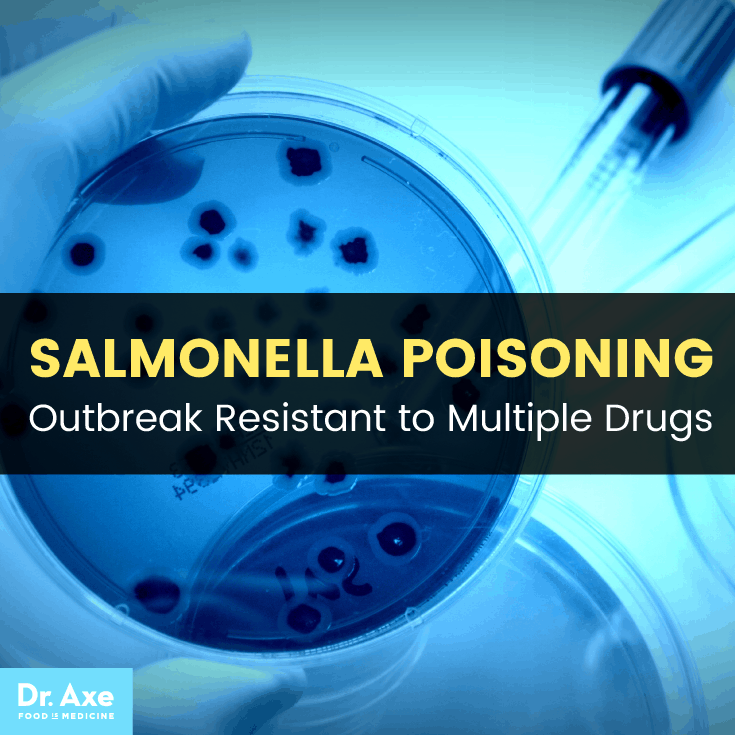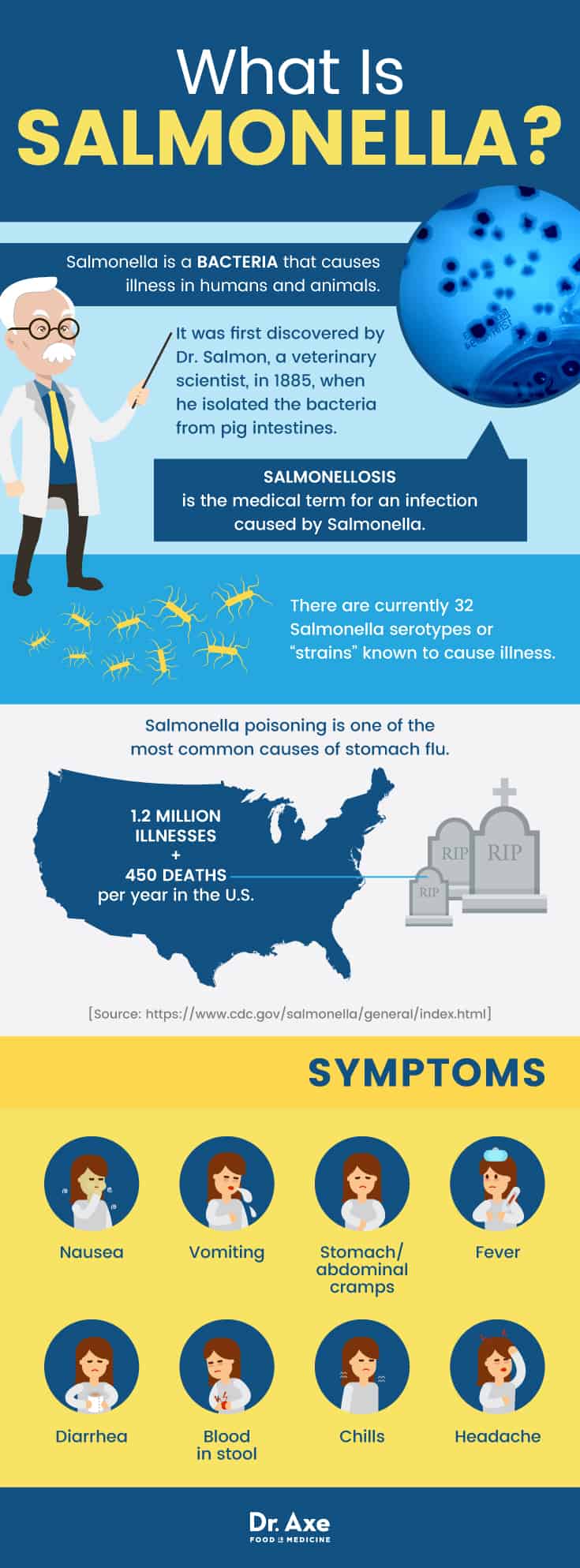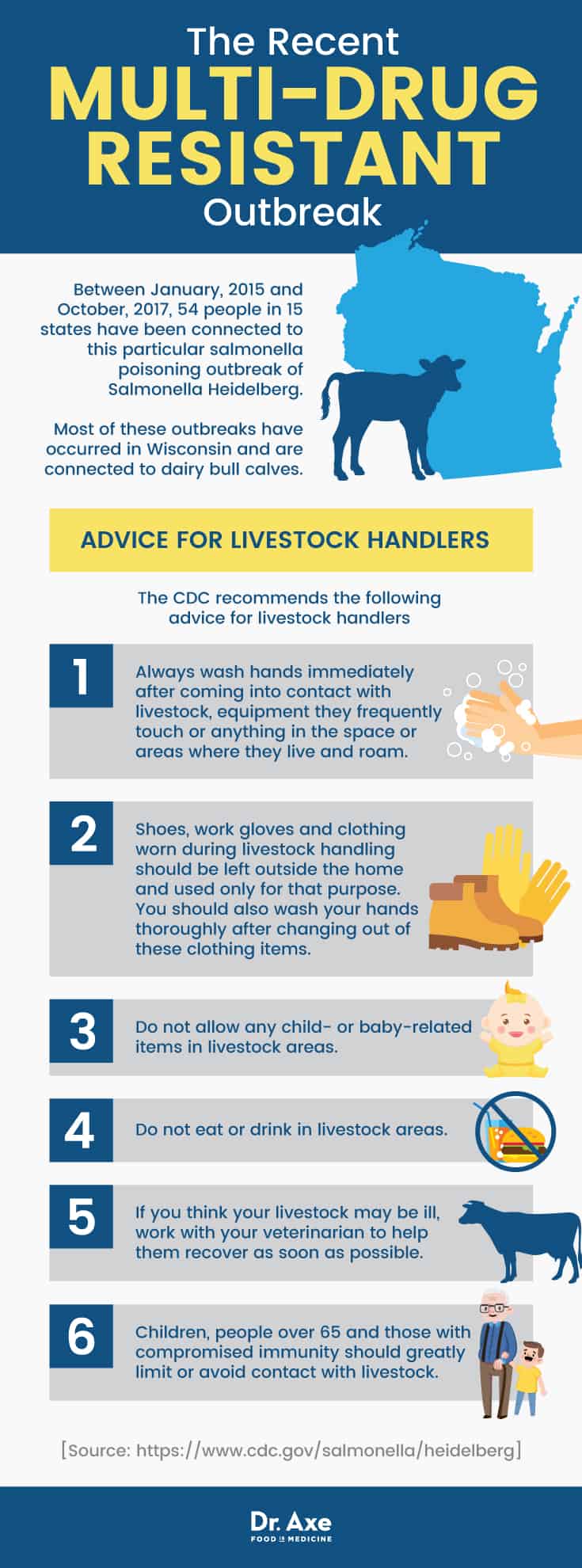This Dr. Axe content is medically reviewed or fact checked to ensure factually accurate information.
With strict editorial sourcing guidelines, we only link to academic research institutions, reputable media sites and, when research is available, medically peer-reviewed studies. Note that the numbers in parentheses (1, 2, etc.) are clickable links to these studies.
The information in our articles is NOT intended to replace a one-on-one relationship with a qualified health care professional and is not intended as medical advice.
This article is based on scientific evidence, written by experts and fact checked by our trained editorial staff. Note that the numbers in parentheses (1, 2, etc.) are clickable links to medically peer-reviewed studies.
Our team includes licensed nutritionists and dietitians, certified health education specialists, as well as certified strength and conditioning specialists, personal trainers and corrective exercise specialists. Our team aims to be not only thorough with its research, but also objective and unbiased.
The information in our articles is NOT intended to replace a one-on-one relationship with a qualified health care professional and is not intended as medical advice.
Multidrug-Resistant Salmonella Poisoning in 15 States
December 20, 2017

In mid-November 2017, the CDC released new information about a multidrug-resistant salmonella poisoning outbreak across several states in the U.S. Their report contained reports of the infection spanning 15 states, at least 54 people and 17 hospitalizations. So far, no deaths have been linked to this outbreak. However, it’s particularly concerning, because this strain of Salmonella Heidelberg doesn’t respond to the common prescription antibiotics used to treat it. (1)
The term “salmonella” is familiar to many of us, often in conjunction with food poisoning. But what exactly is salmonella poisoning? What are the most common salmonella poisoning symptoms? And are there ways to prevent or treat it?
What Is Salmonella?
Strictly speaking, Salmonella is a bacteria that causes illness in humans and animals. It was first discovered by Dr. Salmon, a veterinary scientist, in 1885, when he isolated the bacteria from pig intestines. (2)
Although we use the term “salmonella” to describe the infection, salmonellosis is the medical term for this condition. Salmonella poisoning is one of the most common causes of gastroenteritis, or stomach flu, causing an estimated 1.2 million illnesses and 450 deaths per year in the United States. (3)
There are currently 32 Salmonella serotypes or “strains” known to cause illness. Most of these are known as non-typhoidal salmonella, which accounts for the majority of salmonella poisoning cases. (4)
Typhoid fever is the common term for infection by Salmonella typhi bacteria and is the only known type of typhoidal salmonella. Common mostly in the developing world, typhoid fever is dangerous to children, causing more serious salmonella poisoning symptoms than non-typhoidal salmonella and requiring antibiotic treatment. Typhoid fever causes more complication-related deaths than non-typhoidal salmonella.
It’s important for doctors to understand the difference between this and other Salmonella bacteria, because patients with typhoid fever can develop delirium, swollen abdomens, extremely high fever and, in some cases, a motionless, sub-responsive consciousness known as typhoid state. (6)
Often, people traveling to countries where this bacteria is more prevalent will receive a typhoid fever vaccine, but this vaccine is known to be only partially effective.

Salmonella Poisoning Symptoms
In this piece, I’ll focus just on the signs and symptoms of non-typhoidal salmonella poisoning. The common symptoms of salmonella poisoning are:
- Nausea
- Vomiting
- Stomach/abdominal cramps
- Fever
- Diarrhea
- Blood in stool
- Chills
- Headache
Because of the vomiting and diarrhea usually involved, people with salmonella poisoning frequently develop dehydration symptoms as well, which is why proper hydration is very important for infected people, particularly children, the elderly and those with weakened immune systems.
Many individuals can carry Salmonella without displaying symptoms, but for symptomatic cases, people generally notice cramps, fever and diarrhea within eight to 72 hours of being exposed to the bacteria. Unlike viral gastroenteritis (the most common type of stomach flu), symptoms usually persist for two to seven days, with diarrhea sometimes continuing up to 10 days without treatment. For some people, the bowels don’t get completely back to normal for months after a severe Salmonella infection. (7)
Salmonella Causes, Risk Factors & Complications
Salmonella bacteria live in the intestines of animals, birds and humans. You get salmonella poisoning by consuming feces-contaminated foods containing one of the strains.
Most of the time, salmonella is transmitted via contaminated meat, poultry or fish. However, it’s possible to pass the bacteria via raw eggs (like in homemade mayonnaise or hollandaise sauce), fruits and vegetables, if they have been exposed to water containing Salmonella or if the chicken laying eggs was already carrying it.
In rare cases, salmonella outbreaks have been traced back to contaminants in spices, which is why the FDA is trying to increase the safety of spices.
Factors that can increase your risk to salmonella exposure include: (8)
- Travel: International travel, specifically to countries with poor sanitation standards, is linked to more common cases of salmonella poisoning.
- Pet Sanitation: Birds and reptiles as pets are known as sources of Salmonella strains, and anyone with pets should pay particular care to how they handle feces.
- Antacids: Taking antacids regularly for conditions such as acid reflux can lower your stomach acid concentration and lower your body’s ability to destroy harmful bacteria such as Salmonella.
- Inflammatory Bowel Disease: When you suffer from inflammatory bowel diseases like Crohn’s disease or ulcerative colitis, the wearing down of your stomach lining might allow bacteria to escape from your digestive system.
- Recent Antibiotic Use: If you’ve just been on a round of antibiotics, your normal microbiome bacteria may be depleted, stopping your body from being able to fight off infection.
- Compromised Immunity: People with certain disorders or in situations that compromise the immune system have a harder time fighting infection. These conditions include those such as HIV/AIDS, sickle cell disease, malaria, organ transplant drugs and corticosteroids.
One complication of salmonella poisoning is a reversible inflammatory condition called reactive arthritis. Unlike other forms of arthritis, reactive arthritis goes away on its own most of the time. It most frequently develops in men between 20-50 years old who have had a recent bacterial infection, like salmonella poisoning. Reactive arthritis was previously called Reiter Syndrome and now belongs to the spondyloarthritis family.
If Salmonella enters the bloodstream, it’s possible to develop bacteremia. Bacteremia is an infection of tissues throughout the body, including meningitis (brain and spinal cord), endocarditis (heart and heart valves) and osteomyelitis (bones or bone marrow).
About the Recent Outbreak
Where Is It Happening?
Between January 27, 2015 and October 15, 2017, 54 people have been connected to this particular salmonella poisoning outbreak. The majority of these outbreaks have occurred in Wisconsin and are connected to dairy bull calves in that state. Between five and nine outbreaks have been reported in Minnesota, South Dakota and Missouri, and four or less happened in California, Idaho, North Dakota, Iowa, Oklahoma, Texas, Indiana, Ohio, Kentucky and Virginia. (9)
What Does ‘Multidrug-Resistant’ Mean?
At the dawn of antibiotic development, the scientist who discovered the first in this class of drugs, Alexander Fleming, warned in his Nobel Prize acceptance speech that bacteria might become immune to antibiotics. He was correct — in the last few decades, the CDC and other major organizations have become more concerned about antibiotic resistance. The World Health Organization even calls it “an increasingly serious threat to global public health.” (10)
Antibiotic resistance occurs when antibiotics are used too frequently, allowing bacteria to morph and develop into new strains that don’t respond to antibiotics. Resistance can also happen when you don’t take a prescribed antibiotic long enough. This may allow some bacteria to live and find a way to fight that same antibiotic.
Part of the problem is that no new antibiotics had been discovered between 1987 and 2016, when a team from Northwestern University in Boston found Teixobactin, the first antibiotic discovered in 30 years. (11) The longer the same antibiotics are used, the worse the resistance issue gets.
So, when the announcement about this recent salmonella outbreak says the strain is multidrug-resistant, it means it is a strain of Salmonella that does not respond to antibiotics. People who come down with salmonella poisoning symptoms from this strain of Salmonella Heidelberg will not likely benefit from rounds of antibiotics and will have to fight it off naturally.
Advice for Livestock Handlers
Many of the infected people had come into direct contact with infected livestock, which is why the CDC specifically includes the following advice for livestock handlers in the announcement:
- Always wash your hands immediately after coming into contact with livestock, equipment they frequently touch or anything in the space or areas where they live and roam.
- Shoes, work gloves and clothing worn during livestock handling should be left outside the home and used only for that purpose. You should also wash your hands thoroughly after changing out of these clothing items.
- Do not allow any child- or baby-related items to be in livestock areas.
- Do not eat or drink in livestock areas.
- If you think your livestock may be ill, work with your veterinarian to help them recover as soon as possible.
- Children, people over 65 and those with compromised immunity should greatly limit or avoid contact with livestock.
Conventional Treatment
Due to the dehydration caused by diarrhea, the first line of defense is to stay hydrated when you get salmonella poisoning. It’s not always easy, but do your best to drink enough water while you’re sick (about half your bodyweight in ounces). Doctors often recommend electrolyte drinks or other rehydration liquids to replace lost nutrients.
For children with salmonella poisoning symptoms, no antibiotics are usually prescribed and parents are encouraged to let the illness run its course. Some physicians will suggest acetaminophen for children with fevers.
Adults are a bit of a different story. Again, hydration is key and many people recover from the infection by the time test results return. Occasionally, doctors might prescribe anti-diarrheal medication for adults to eliminate some cramping, but this can extend the infection as your body isn’t able to expel it as easily. (12)
If your doctor determines you’ve been infected with Salmonella bacteria, he or she may prescribe antibiotics, though these won’t work for all strains. People at higher risk for complications or severe symptoms, such as the elderly or people with compromised immunity, are more likely to be given these medications. If your doctor puts you on an antibiotic, be sure to follow their orders and finish the entire round. Don’t stop them just because you may “feel better,” as this can contribute to antibiotic resistance. (13)
In some cases, people with salmonella poisoning may need to be hospitalized so that they can be under supervision consistently and receive fluids and nutrients intravenously.
Salmonella Prevention & Natural Treatment
1. Practice Food Safety
Because there is no cure for salmonella poisoning, the best way to fight salmonella is to prevent it before it becomes a problem. The number one way to do this is by practicing good food safety practices at home.
It’s easy to get careless when you’re tired or rushing (I completely identify with that). But by making sure to follow a few simple tips, you can minimize your risk of coming into contact with Salmonella or other foodborne pathogens.
Here are some simple things to implement at home to avoid salmonella poisoning. (14)
- Limit how much you eat “high-risk” foods like uncooked eggs or undercooked meats/poultry/fish.
- If you choose to eat or drink raw dairy like kefir or raw milk, be mindful of the source and purchase only from reputable companies with good sanitation practices.
- Promptly refrigerate foods and don’t leave out refrigerated items once you’re done using them.
- Wash your hands and all cooking surfaces before coming into contact with foods. Soap and water are sufficient, but don’t skimp on this detail.
- Don’t cross-contaminate raw and ready-to-eat foods. That means any surface you place raw meat on, for instance, should be sanitized before any ready-to-eat food is placed there. You should also never use the same utensils or cookware on raw and ready-to-eat foods unless you’ve thoroughly washed them in between.
- Thoroughly cook meats to proper internal temperatures. Don’t just “eye” them, but use a meat thermometer to be sure.
- After serving food, chill the leftovers quickly and don’t leave them out long.
- Any time you touch animals or surfaces they’ve touched, thoroughly wash your hands before returning to cooking.
2. Use Lime Juice
Sound a little odd? That’s OK — lime juice inhibits the growth of salmonella in a lab, and can be a useful tool in your kitchen to help eliminate bacteria from foods and even to sanitize surfaces using a homemade household cleanser. (15)
Lemon and lime are both well-known for their citrus-scented, bacteria-killing power, so whether you use them in cleaners or just to add some taste to your dishes, they’re worth it.
3. Detoxify with Activated Charcoal
Ever heard of activated charcoal? If not, you should have! It’s possibly one of the most powerful detoxifying substances available. The charcoal itself doesn’t absorb toxins, but through a process known as adsorption, allows the body to get rid of dangerous compounds safely.
A 2005 study tested a combination of vinegar and activated charcoal to eliminate Salmonella in chickens and found that their concoction got rid of the bacteria far more efficiently than the current vaccination method for poultry. (16)
If you’re going to try activated charcoal to detoxify and lessen the effects of food poisoning, remember that your water intake should go up while using it.
4. Regularly Consume Probiotics
One way to give your immune system the best chance of fighting off disease is by maintaining healthy gut bacteria. Eating probiotic foods and supplements won’t necessarily shorten a Salmonella infection once it’s already started, but by regularly consuming probiotics, you’ll strengthen your microbiome and allow your body to fight the bacteria the way it was designed to.
5. Integrate More Coriander in Your Food
Another surprising way to potentially protect your body against salmonella is by using coriander. This little-known spice kills Salmonella bacteria in a lab and could potentially help keep your food clear of that and other bacteria that can cause food poisoning. (17)
6. Use Antibacterial Essential Oils
If you’re starting to think I have an essential oil for everything … You’d be right. (Or, at least, pretty close.) The truth is that some essential oils are powerfully antibacterial. Multiple studies support the theory that antibacterial essential oils may help to sanitize food and protect people from some types of salmonella poisoning, based on the way they interact in lab and animal models. (18, 19, 20)
What are some of the oils that may be worth implementing into your cooking and/or cleaning for this reason? (21, 22, 23, 24)
- Oregano oil
-
Thyme
- Clove
- Allspice
- Cinnamon
- Bay leaf
- Palmarosa
- Marjoram
These oils have all been found to help decrease or eliminate some Salmonella bacteria strains when used on food or infected surfaces. Again, this is not a cure for salmonella poisoning, but a way to help protect your food against contamination.
7. Sleep and Stay Hydrated
Once you’ve started showing salmonella poisoning symptoms, there’s not a lot you can do to speed the process. Your body will fight off the infection naturally, but you can help by staying hydrated and getting plenty of sleep. If you have had consistent diarrhea and/or vomiting, try using natural electrolyte drinks like coconut water to replenish lost nutrients.
Precautions
While most cases of salmonella poisoning are not serious, certain people should always seek medical attention if they suspect they are infected, including the elderly, very young children or those who have weakened immunity for other reasons. If you or someone you love fits in these categories and experiences symptoms of food poisoning, visit your doctor immediately. These can be situations where smart use of antibiotics is necessary. (25)
If you are prescribed antibiotics, as I have mentioned, take the entire round and do not discontinue just because you may feel better — this can actually cause the bacteria to come back with a resistant vengeance.
Even if you aren’t in the groups mentioned above, if you experience nausea, vomiting and/or fever for over a week, see a doctor. They can help to diagnose the root cause, which is important at that point because you may run the risk of becoming seriously nutrient deficient.
Key Points
- Salmonella is a bacteria found in a few dozen different strains throughout the world, associated with bacterial food poisoning.
- The major salmonella poisoning symptoms include fever, nausea, vomiting, diarrhea, abdominal cramps, bloody stool and headache.
- An outbreak of a multidrug-resistant strain of Salmonella Heidelberg has been spreading in the Midwest since early 2015 and is linked to dairy bull cows in Wisconsin.
- This particular outbreak does not respond to antibiotics and has resulted in 17 hospitalizations at the time of this writing.
- Conventional treatment for salmonella poisoning includes proper hydration, getting plenty of sleep and sometimes antibiotics.
The 7 best ways to prevent and naturally treat salmonella poisoning are:
- Practice food safety.
- Utilize lime juice.
- Detoxify with activated charcoal.
- Regularly consume probiotics.
- Integrate more coriander in your food.
- Use antibacterial essential oils.
- Sleep and stay hydrated.

